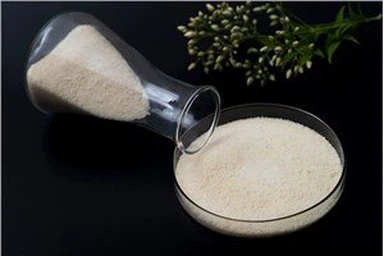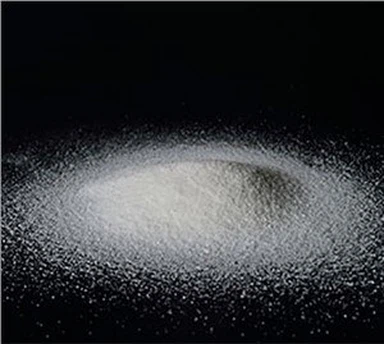How Much Do You Know About The Difference Between Protein And Protein Peptide?
Jun 04, 2021
Three-dimensional Structure of Protein and Two-dimensional Structure of Protein-peptide
The three-dimensional structure of proteins is not a new topic, and the two-dimensional structure of protein peptides has been studied in depth. These structures are still inextricably linked to our daily physical health and health care.
The three-dimensional structure of the protein is conducive to the realization of the activity of its functional segments, and the cooking process, heating process, and curing methods can destroy the three-dimensional structure of the protein and make it inactive. However, doing so will often give us other results, such as delicious taste and safe food. In biological enzymatic hydrolysis technology, we often use temperature changes and acid-base changes to change the three-dimensional structure of proteins, to prepare for subsequent enzymatic hydrolysis.
The principle and process of industrial extraction of animal protein are very similar to our daily cooking at home. For example, the homemade soup in the south: firstly, high temperature is used to denature the protein in the meat and bones. At this time, the protein is contracted by heat, and the three-dimensional structure is compact and can kill. It kills most bacteria, but it is not suitable for immediate biological proteolysis. Enzymatic hydrolysis has a better effect in an aqueous system. Therefore, it is necessary to change the fire at home and cook slowly, so that the three-dimensional structure of the protein is slowly destroyed in boiling water. The hydrophilic part appears in the structure, thus forming a dissolved macromolecular broth. When the three-dimensional structure is damaged, some free amino acids are released, so the broth presents a unique and delicious taste. In industrial protein extraction, we use moderate temperature treatment, this process can also kill most bacteria, and because the temperature will not rise suddenly, the three-dimensional structure of the protein will not suddenly shrink, but there will be proper unwinding and large dissolution. The molecular protein fragments are similar in structure and size, and there are relatively few free amino acids in the fragments, and the material loss in the subsequent enzymatic hydrolysis process will also be reduced.
We all know that adding a little salt to the broth at the end will make it more delicious. The essence is that the three-dimensional structure of the protein is gradually broken during the cooking process to form small water-soluble protein molecules. These molecules still have a certain three-dimensionality. Structure. When salt is added, it promotes the further decomposition of the three-dimensional structure of part of the protein and releases more amino acids, which makes the soup more delicious. Therefore, in industry, we use biological enzymatic hydrolysis methods to efficiently and more deeply decompose the dissolved three-dimensional structure protein into two-dimensional structure amino acids. The three-dimensional structure of protein molecules after medium-temperature cooking is denatured and inactivated, forming part of them. Hydrophilic group. But from the structure, there are still many positions with certain chemical activity, which are easy to interact, become one, or form a certain structure with water, so the protein liquid has a certain viscosity at this time, and it is easy to produce foam when stirring, and the foam is not easy to disappear. The small amino acid molecules that have been enzymatically transformed into a two-dimensional structure have a simple structure, and the hydrophilic group is released and exposed to the greatest extent, making the viscosity of its aqueous solution weaker and closer to the state of water.
The difference between the two-dimensional and three-dimensional structure on the microscopic level has caused the shape of the protein solution on the macroscopic level to change. These phenomena are also commonly used to judge the degree and progress of the microscopic reaction in the process of protein extraction by biological enzymatic hydrolysis. As the two-dimensional structure is produced, more free amino acids appear, and the acidity in the system gradually becomes stronger, forming a slightly acidic protein peptide solution.
In protein enzymatic hydrolysis technology, the microscopic world and the macroscopic world are closely connected, and each change and state corresponds to each other. As long as the relationship between the three-dimensional structure of the protein and the two-dimensional structure of the protein peptide is viewed, the biological enzymes can be better-understood Solution process. The biological activity and value of protein peptides with two-dimensional structures are greatly improved compared with proteins with three-dimensional structures. At the same time, some biological characteristics of the three-dimensional structure are also weakened, which is more suitable for the human body to absorb and use. The topic of protein peptides will be further elaborated later. The two-dimensional structure of protein peptides and their biomedical applications are currently one of the hot spots in the field of biomedicine, and the age of life sciences may open a new era of vigorous development.
4. Is it nutrition or medicine? The true function of protein peptides
There have been people who have been promoting the concepts of protein peptides, proteins, and small molecule proteins, and there are also many doubts. Does protein peptide have the magical functions that are promoted? Let's try to analyze from the perspective of rationality and common sense.
First of all, let's clarify the difference between protein peptides and proteins: Simply put, protein peptides are a part of protein. Multiple protein peptides are combined into protein molecules. They have certain macro functions. Proteins can be hydrolyzed, acid-base, or biological enzymes. Decomposed into protein peptides, further decomposition can finally obtain free amino acids. It seems that since protein peptide is a part of protein, does it still have certain biological activity and function? Or is it that only complex proteins have biological activity?
Amino acids are not simple and disordered protein peptides. Just like we make cars, each component has its function and characteristics: spark plugs can generate electric sparks, pistons can convert combustion energy into motion, and crankshafts are matched with pistons. The key is to transfer the motion to the tire gear set... and various components are combined into an engine, and various structures are finally combined into a car. Although the car has a macro function, at the same time, each component, even a screw, also has its function, even if it is not used in the car, it can also be used in other coordinated places! This is not only on the nutritional level but also on the biological activity level.
In the past 30 years, the Nobel Prize in Biology has done a lot of research on protein peptides, and the results are gradually changing people's lives. Although some commercial propaganda, with people's understanding and understanding of related technologies, the company's production technology has improved, and high-quality products have entered the market, people's healthy lives will get better and better. Here are some excerpts of Nobel Prize technical achievements to understand protein peptides from another perspective:
In 1984, American biochemist Robert Bruce Merrifield discovered peptides, which play a key role in human growth and development, metabolism, disease, aging, and death, and won the Nobel Prize in Chemistry that year.
In 1986, the Italian biologist Rita Levi-Montalcini and the American biologist Stanley Cohen conducted in-depth research on peptides and found that peptides can repair damaged diseased cells, regulate cell life cycle, activate senescent cells, regulate intercellular ion metabolism channels, and The comprehensive conditioning of the major systems of the human body played a role in promoting, and won the Nobel Prize in Medicine that year.
In 1993, Dr. Allen Siber made the scientific research results of peptides in the medical field on the repair, conditioning, and activation of human cells and genes. Its value exceeds any substance found in human history. This scientific research achievement made him win the Nobel Prize that year.
In 1999, Professor Gunter Blobel from the United States discovered that signal peptides control protein transport and won the Nobel Prize in Chemistry.
In 2000, Swedish scientist Arvid Carlsson was awarded the Nobel Prize in Chemistry for his research on the molecular mechanism of brain nerve transmission message proteins.
In 2015, American & Turkish scientist Aziz Sancar, Swedish scientist Tomas Lindahl, and American scientist Paul Modrich won the Nobel Prize in Chemistry for discovering that peptides are tools for repairing DNA in cells.
From the above content, it is not difficult to find that protein peptides are not only nutrients as simple as nutrients, but also important active substances for the human body, participating in various physiological functions and metabolic processes. The human body's intake of protein peptides is not only digested into amino acids for re-absorption but can be actively absorbed through specific channels. The protein peptides absorbed into the body are not just protein-construction nutritional materials but play more physiological roles. Promote or stimulate some physiological metabolic processes. This also explains why soy protein and beef protein are similar to the most basic amino acid level, but when eating soy protein and beef protein, there are obvious differences in the physiological indicators of the human body.
On the other hand, the protein peptides hydrolyzed by natural animals and plants may have more biological metabolic functions that we have overlooked. Perhaps in the process of formulating Chinese herbal medicines, certain protein peptides may be more than nutritional. The role, but to change the physiological metabolism or biological activity, thus showing the unique medicinal properties. This may be a new perspective for breakthroughs in the modernization of Chinese medicine.
In short, if protein peptides are not just nutritious foods, different protein peptides should have certain biological activity and medicinal value. The way of ingesting protein peptides can be more intestinal absorption and improve the absorption and utilization of protein-peptide products. There are still too many mysteries and space for exploration in the field of protein peptides. With more understanding and in-depth research, the protein peptide industry will surely create greater value.






